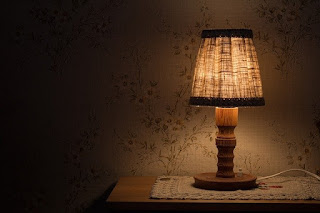How to change bulb in under cabinet light?
To create localised lighting on a piece surface, under-cabinet lighting is sometimes installed underneath a cupboard, shelf, or similar surface. Under-cabinet lighting are often used as a nightlight similarly.
Under cabinet lighting designs that are unique and well-crafted are gaining lots of traction. As hostile traditional designs that have electric lamps on the walls and ceilings, under cabinet lighting offers variety of advantages. during this article, we are going to find out how to alter bulb in under cabinet light.
Types of Under Cabinet Lights
Puck and linear lights are the 2 most well liked styles of under cabinet lighting.
Puck Under Cabinet Lights
Puck lights are available in round or oval shapes and they’re ideal for cabinet and show lighting. rather than providing even illumination round the counter top, puck lights may produce scallops, spots, or pools of sunshine.
Puck Under Cabinet Lights design
Under cabinet lighting with puck lights has long been a typical option. They’re small, cylindrical lights with a diameter of 2-3 inches, shaped sort of a disc. they sometimes use halogen or xenon bulbs that produce around 20W of sunshine.
Many xenon and halogen puck lights run directly on 120V AC, but others need a transformer to scale back the voltage to 12V. confine mind that these transformer devices are bulky and can take some ingenuity to hide under a cupboard.
Puck lighting fixtures are normally installed on the underside of cupboards with small screws that include the merchandise. LED puck lights now dominate the market and supply comparable efficiency by employing a fraction of the capacity.
LEDs run on low voltage DC instead of AC line voltage, so they’ll need an influence supply to convert the road voltage. You’ll must learn how to stay the facility supply concealed in your fridge, or house a “wall-wart” that plugs directly into the electrical socket, very much like with 12V halogen puck lights.
However, since LED puck lights are so effective, some can even be powered by batteries. this can remove the necessity to run electrical wires, simplifying installation and removing the messy appearance of loose electrical wires.
With a directed beam that casts an approximately triangular beam shape directly under each puck light, puck lights, like spotlights, provide a more dramatic look. counting on your tastes and preferences, this might or might not be a nice look.
Linear Under Cabinet Light
Linear lighting is also within the variety of a lightweight strip, a linear fixture, or a lightweight bar. On one mounting strip, linear fixtures imitate small puck lights.
Light strips with a width of but one inch are very narrow. They’re sold by the foot and might be move length on the work site. lamp fixtures built for under cabinet use to bar and strip kinds of under cabinet lighting.
Linear Under Cabinet Light design
As hostile puck lights, fluorescent light bar lights usually have the ballast and other drive electronics embedded within the fixture, making installation and wiring easier. The T5 fluorescent fixture is that the most typical type to be used under cabinets because it's a smaller profile.
The mercury content of fluorescent strip lights for under cabinet use may be a major disadvantage. Mercury vapour from a lamp would wish significant cleaning within the rare but still possible case of a lamp breakage. Toxic chemicals like mercury are certainly a risk in an exceedingly kitchen setting.
Linear lamps, unlike puck lights, emit light equally throughout the length of the bulb, leading to a more even and seamless light distribution. LED strip lights and LED bar lights are now viable options. Integrated LED light bars and LED strip reels are options.
Some LED light bars also support daisy chaining, which suggests that multiple light bars will be connected during a row. This simplifies installation by eliminating the necessity to run separate wires for every fixture.
How To Change Bulb In Under Cabinet Light?
Step 1: Before handling the sunshine fixture, switch it off and provides enough time for the device and bulb (lamp) to cool down down.
Step 2: By rotating the cap counter-clockwise, the lens cap may be far from the Xenon heads. make sure to not drop the lens, because it will break.
Step 3: Grasp the bulb tightly with a cloth or towel and take it out of the socket. Replace the bulb with a brand new one, holding it in situ with a towel or sheet.
Step 4: Align the three (3) attachment legs within the cap with the corresponding holes within the head to reattach the lens cap to the pinnacle. To secure the lens, turn it clockwise. The lens cap also is a lamp and UV shield. don't use the Xenon lights unless the covers are in same place.
